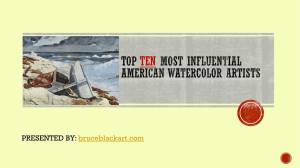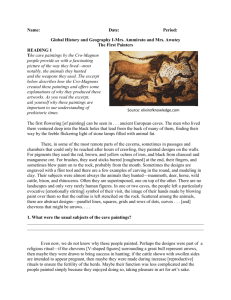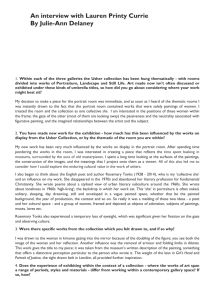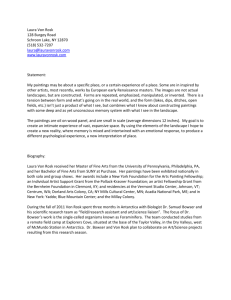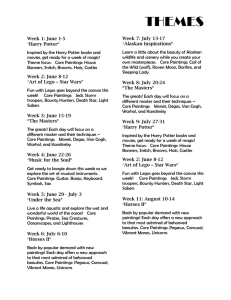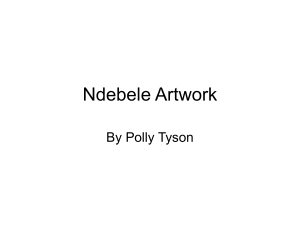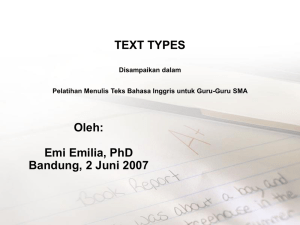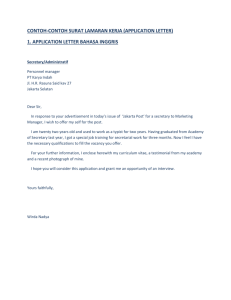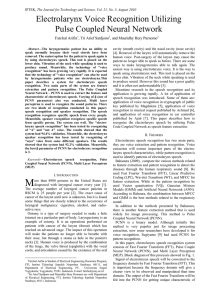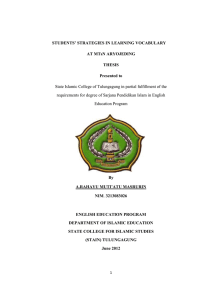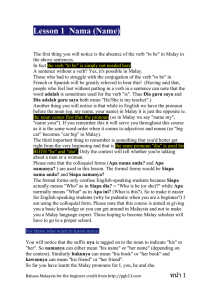Old Masters of Myanmar Art by Ma Thanegi Myanmar did not have a
advertisement
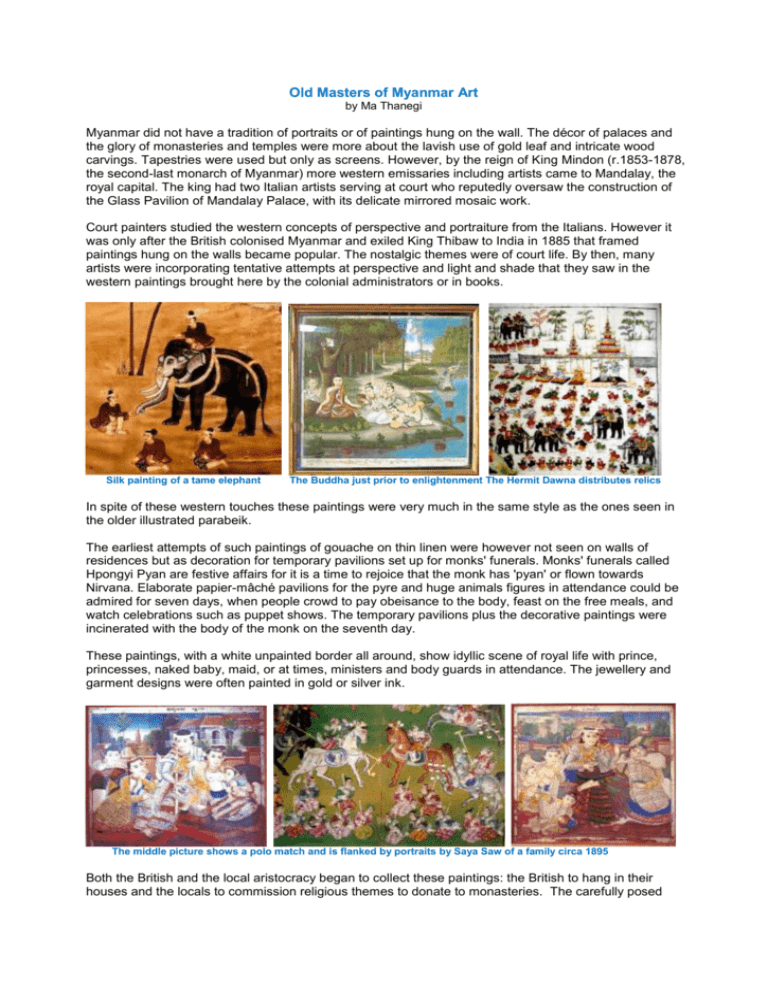
Old Masters of Myanmar Art by Ma Thanegi Myanmar did not have a tradition of portraits or of paintings hung on the wall. The décor of palaces and the glory of monasteries and temples were more about the lavish use of gold leaf and intricate wood carvings. Tapestries were used but only as screens. However, by the reign of King Mindon (r.1853-1878, the second-last monarch of Myanmar) more western emissaries including artists came to Mandalay, the royal capital. The king had two Italian artists serving at court who reputedly oversaw the construction of the Glass Pavilion of Mandalay Palace, with its delicate mirrored mosaic work. Court painters studied the western concepts of perspective and portraiture from the Italians. However it was only after the British colonised Myanmar and exiled King Thibaw to India in 1885 that framed paintings hung on the walls became popular. The nostalgic themes were of court life. By then, many artists were incorporating tentative attempts at perspective and light and shade that they saw in the western paintings brought here by the colonial administrators or in books. Silk painting of a tame elephant The Buddha just prior to enlightenment The Hermit Dawna distributes relics In spite of these western touches these paintings were very much in the same style as the ones seen in the older illustrated parabeik. The earliest attempts of such paintings of gouache on thin linen were however not seen on walls of residences but as decoration for temporary pavilions set up for monks' funerals. Monks' funerals called Hpongyi Pyan are festive affairs for it is a time to rejoice that the monk has 'pyan' or flown towards Nirvana. Elaborate papier-mâché pavilions for the pyre and huge animals figures in attendance could be admired for seven days, when people crowd to pay obeisance to the body, feast on the free meals, and watch celebrations such as puppet shows. The temporary pavilions plus the decorative paintings were incinerated with the body of the monk on the seventh day. These paintings, with a white unpainted border all around, show idyllic scene of royal life with prince, princesses, naked baby, maid, or at times, ministers and body guards in attendance. The jewellery and garment designs were often painted in gold or silver ink. The middle picture shows a polo match and is flanked by portraits by Saya Saw of a family circa 1895 Both the British and the local aristocracy began to collect these paintings: the British to hang in their houses and the locals to commission religious themes to donate to monasteries. The carefully posed groups often had a backdrop of palaces or gardens. New technology such as steam ships and trains soon caught the imagination of the artists and the backgrounds began to include them together with 'modern' Victorian mansions. When these paintings became sought after, they were often seen displayed for sale on the marionette or theatrical barges plying up and down the major rivers. It was only with these types of paintings that artists began to sign their work, at top and centre on the border, with the words 'student of Master.' following their names. Artists who excelled at this style that lasted all too briefly, at the most for fifty years, were U Kyar Nyunt (Approx. 1844 - 1880), Saya Chone (1866-1917.), Saya Saw (approximately 1870 -1910) and Saya Thaung(1865 - 1940). Saya is an honorific prefix meaning master, teacher. Portraits of a wealthy family by Saya Maung Hisn Let circa 1895 Saya Chone was only 14 when he became apprentice to the court painter Saya Sar, who at the time just succeeded U Kyar Nyunt. Three years later Master Sar became blind and at the age of 17 Saya Chone became the master painter of King Thibaw's court until the annexation in 1885. He excelled in portraiture in the western style. Saya Thaung was a student of the great Saya Chone and proudly declared it on his paintings, although his teacher was one year younger. He excelled at collage, gluing not only gold leaf but small gems, brass sequins, gold thread and flakes to mark the jewellery worn by his subjects. His figures and faces had more grace and charm than that of others. Saya Saw his contemporary painted not only posed royal scenes but also historical encounters between the British rulers and the Burmese nobles. The centre painting of a horse race is flanked by two family portraits by Saya Thaung Nothing is known of painter Saya Maung Hsin Let apart from the two obviously commissioned family portraits painted in 1895, according to the date of old newspapers used to pack the painting at the back. The wealthy noble or merchant whose family is the subject seemed to like 'modern' and western things such as a dog o foreign breed, a tricycle for his son (although the boy wears a tradition hair style), and a horse carriage with Indian grooms. Photography arrived in Myanmar in the same year and it is not known if the subject ordered it or if it was the inspiration of the painter to glue photos of relevant faces on the paintings instead of using brush and paint. A delightful family portrait by Saya Chone It is rare but similar paintings on silk were done, but not to be framed. Rather, they had the look of Chinese scrolls. As the strict laws of court behaviour disappeared, painters began to have more freedom. By 1920 the Burma Art club was formed where young painters studied and painted in oils on canvas, and soon some were studying art in Britain along with those taking the bar or reading at Cambridge and Oxford. The posed court scenes disappeared to be replaced by excellent water colours and fine oils. A meeting between two nobles seated on Western-style chairs Ma Thanegi was born in Myanmar and educated at the Methodist English High School, the Yangon State School of Fine Arts, and the Institute of Economics. She has written many articles and numerous books on Myanmar asffairs. She lives in Yangon.


